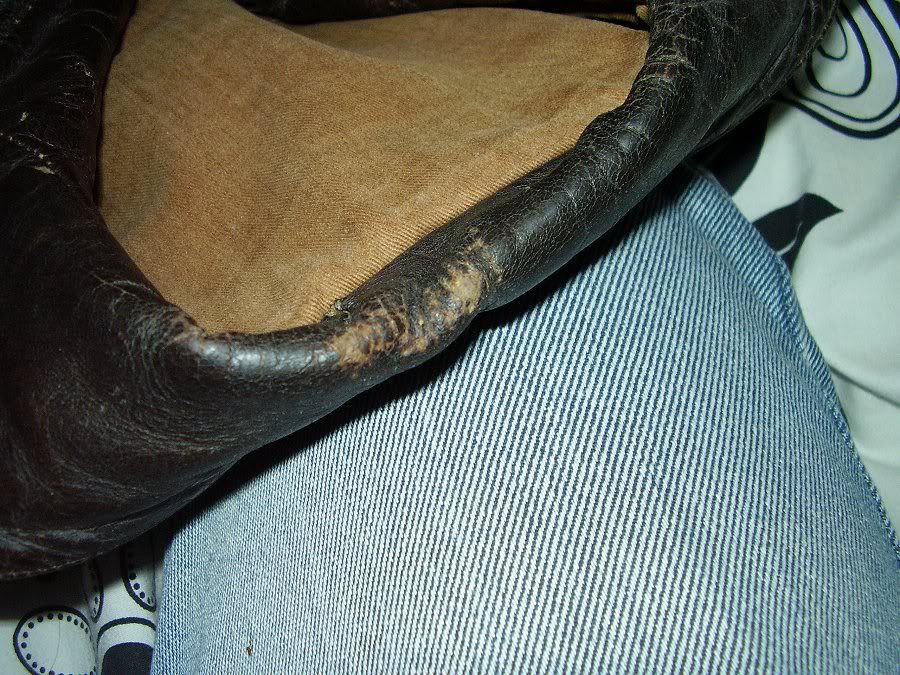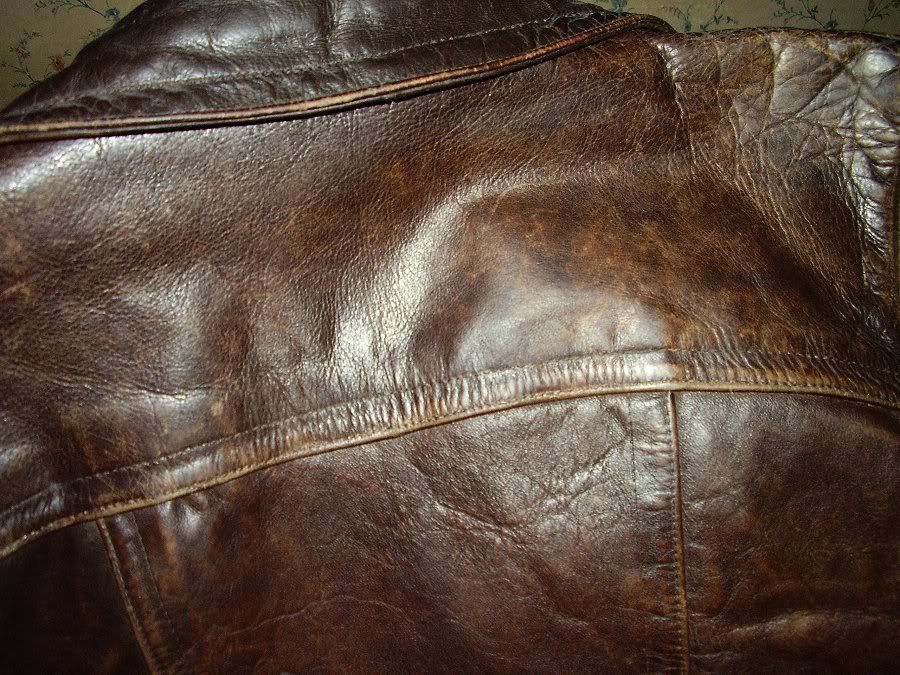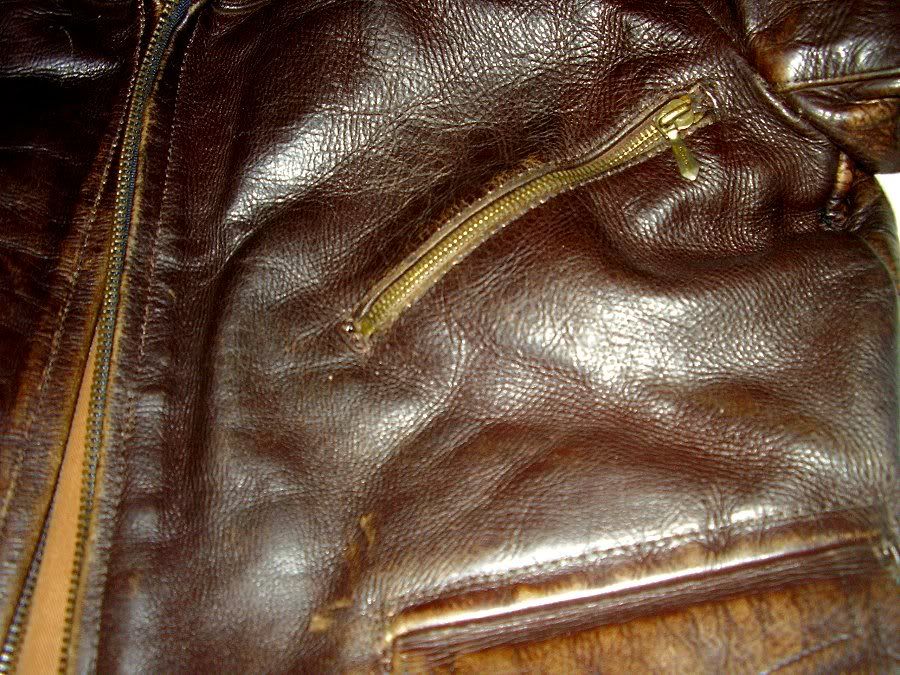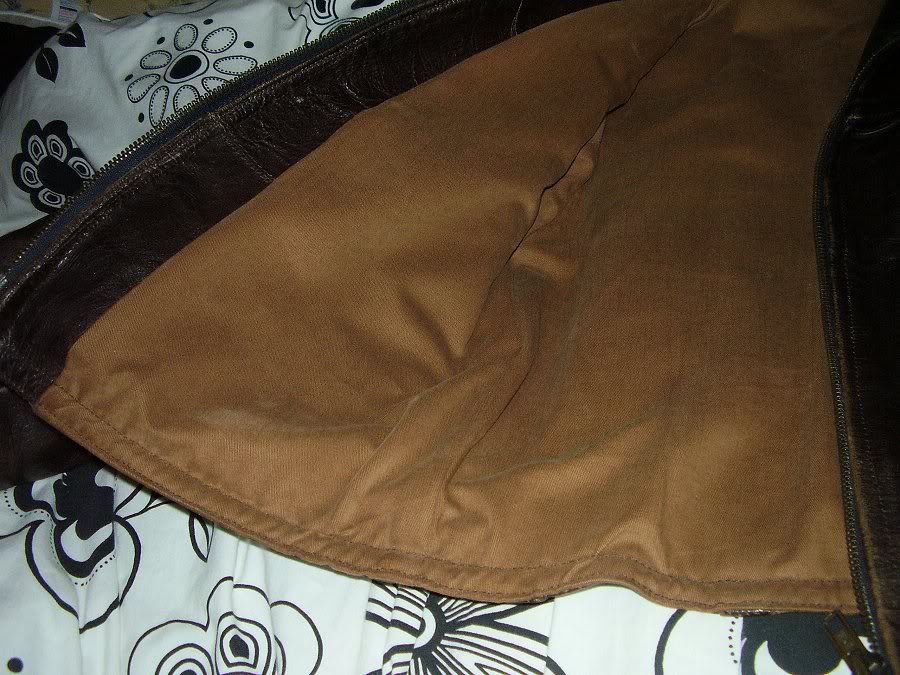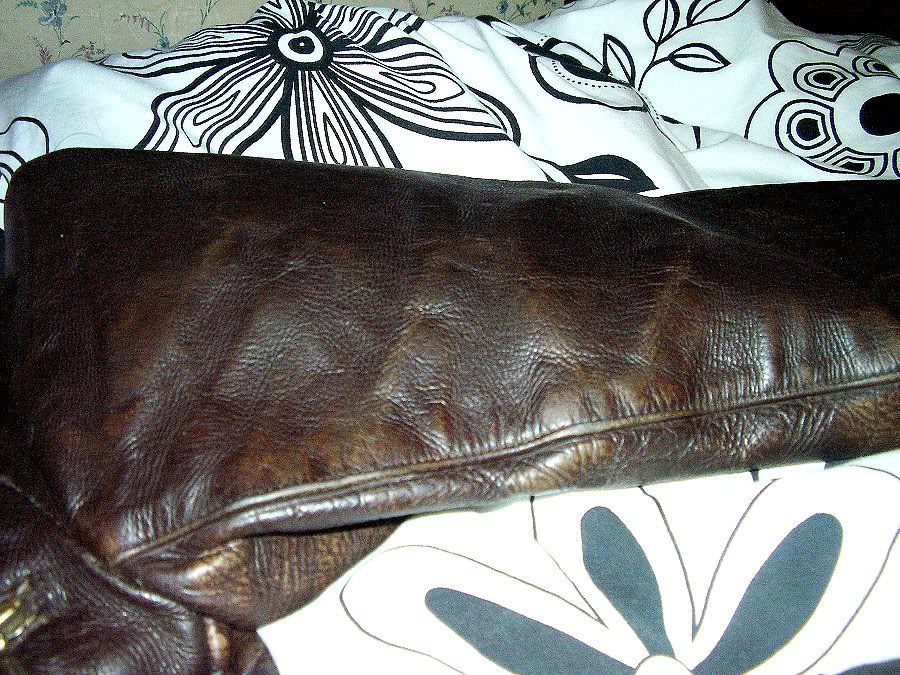Having broken out the whisky for the evening, and having read the replies to the thread I made last week about my Aero jacket as well as having gone back to the archives of TFL and read up on the pro's and con's of horsehide, I started pondering - after all, what else is a man to do while enjoying a dram? More specifically, I started thinking about the durability of modern-day reproductions versus the originals. Two things are off particular interest to me there: damage done to the top layer of the leather, and how this affects the survival-rate of the jacket; and how different a leather "modern" horsehide is compared to the stuff from the 20s, 30s and 40s.
One thing I've noticed in handling older mc jackets, is that the ones that survive past their 10th or 15th birthday, are usually the ones with relatively little damage done to the top layer of the leather. I've seen Schott jackets that were pierced, studded and painted by old-school punks, and the leather looked great (except where it had been pierced, obviously). On the other hand, I've seen a couple of jackets that were barely 5 years old, but were so scuffed (having accidently been scraped against benches, walls, branches, bars and the occasional concrete - after stumbling home from the bar, having run out of benches, walls and trees to lean against to restore one's balance, no doubt) that the owners got rid of them. I have on occasion wondered if getting rid of these jackets was a premature move by their owners, but several leather "experts" ensured me that once the top layer of the leather is damaged, the remaining leather doesn't stand a chance. It doesn't matter if you apply liberal amounts of conditioner to the scuffed area: apparently, something about the tanning process, according to them, makes the outside (and only the outside) layer of the leather tough and durable. I never questioned that, considering it conventional wisdom, until now.
I've seen pictures on the TFL of jackets made in the 30s and 40s (one of my favourites being the one here: http://www.thefedoralounge.com/showthread.php?35145-My-latest-1930-40-s-leather-jacket-Cycle-Luftwaffe-style&highlight=german+jacket), and although it's hard to see in those pictures, I have a hard time imagining that a jacket that's 50 or 60 years old wouldn't have had its top layer scuffed as time went by, especially because leather jackets were originally workwear. Unless the owner of the jacket only wore it to do the dishes (and even then, accidents with slippery plates are just waiting to happen), scuffing and scraping was bound to happen. So what's the story there - was the 20th-century horsehide all that different from the 21st-century horsehide? Did they use different tanning processes that would make, say, a modern-day Aero less durable than a 50-year old California Sportswear? This is especially interesting, I think, considering the fact that as far as I can judge by looking at pictures of the era, vintage jackets were made from a much lighter leather as is currently being used by the likes of Lost Worlds, Aero or Langlitz. The old jackets seemed to "drape" around its wearer, much more so than modern repro's.
Any thoughts on the subject are more than welcome. In the mean time, I shall retire with another wee dram, I think...
One thing I've noticed in handling older mc jackets, is that the ones that survive past their 10th or 15th birthday, are usually the ones with relatively little damage done to the top layer of the leather. I've seen Schott jackets that were pierced, studded and painted by old-school punks, and the leather looked great (except where it had been pierced, obviously). On the other hand, I've seen a couple of jackets that were barely 5 years old, but were so scuffed (having accidently been scraped against benches, walls, branches, bars and the occasional concrete - after stumbling home from the bar, having run out of benches, walls and trees to lean against to restore one's balance, no doubt) that the owners got rid of them. I have on occasion wondered if getting rid of these jackets was a premature move by their owners, but several leather "experts" ensured me that once the top layer of the leather is damaged, the remaining leather doesn't stand a chance. It doesn't matter if you apply liberal amounts of conditioner to the scuffed area: apparently, something about the tanning process, according to them, makes the outside (and only the outside) layer of the leather tough and durable. I never questioned that, considering it conventional wisdom, until now.
I've seen pictures on the TFL of jackets made in the 30s and 40s (one of my favourites being the one here: http://www.thefedoralounge.com/showthread.php?35145-My-latest-1930-40-s-leather-jacket-Cycle-Luftwaffe-style&highlight=german+jacket), and although it's hard to see in those pictures, I have a hard time imagining that a jacket that's 50 or 60 years old wouldn't have had its top layer scuffed as time went by, especially because leather jackets were originally workwear. Unless the owner of the jacket only wore it to do the dishes (and even then, accidents with slippery plates are just waiting to happen), scuffing and scraping was bound to happen. So what's the story there - was the 20th-century horsehide all that different from the 21st-century horsehide? Did they use different tanning processes that would make, say, a modern-day Aero less durable than a 50-year old California Sportswear? This is especially interesting, I think, considering the fact that as far as I can judge by looking at pictures of the era, vintage jackets were made from a much lighter leather as is currently being used by the likes of Lost Worlds, Aero or Langlitz. The old jackets seemed to "drape" around its wearer, much more so than modern repro's.
Any thoughts on the subject are more than welcome. In the mean time, I shall retire with another wee dram, I think...




